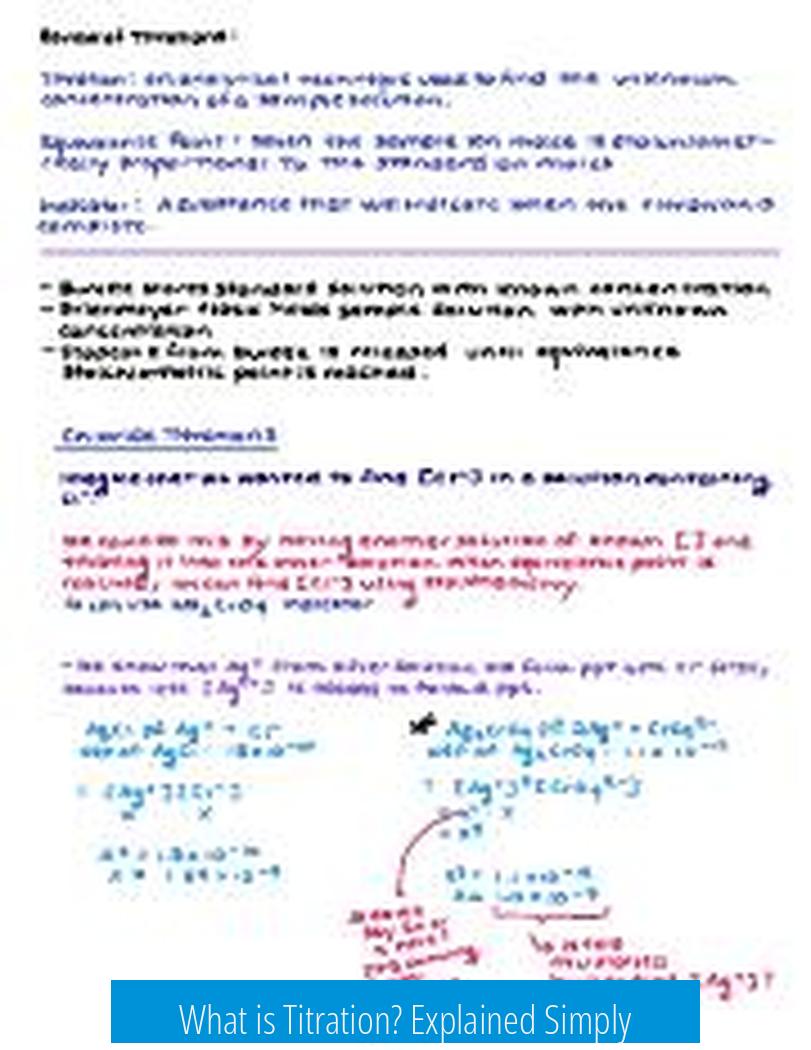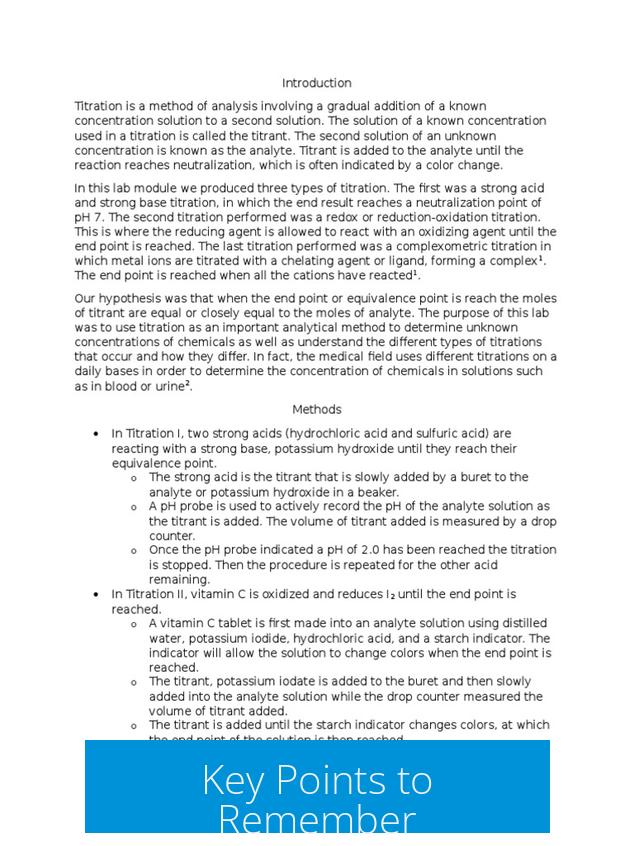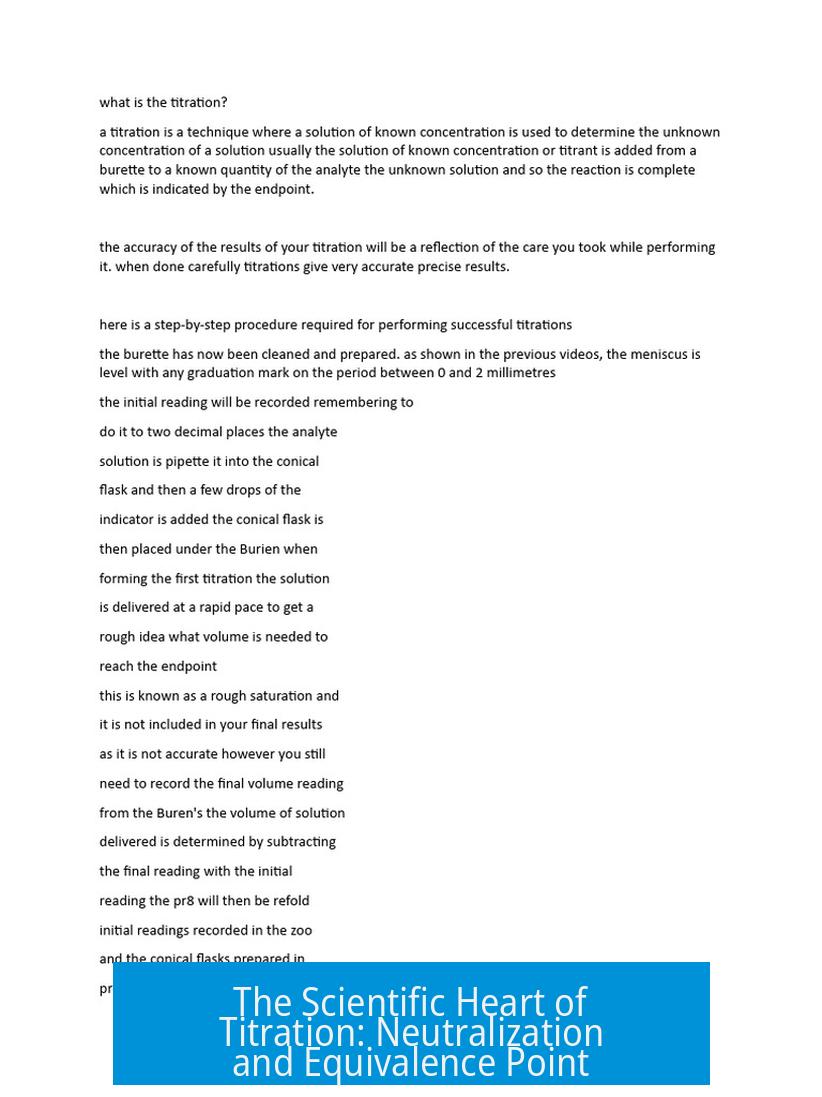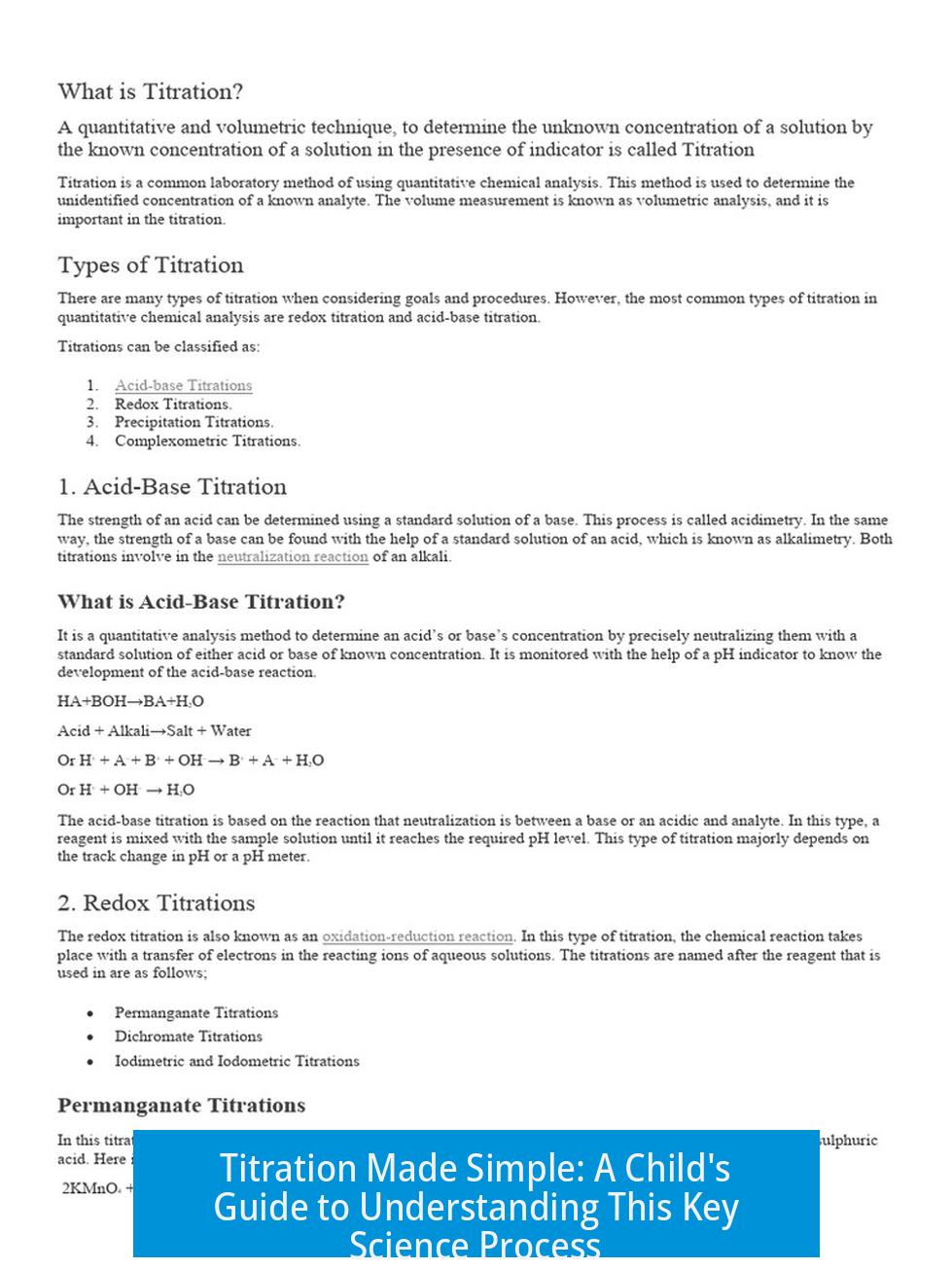What is Titration? Explained Simply

Titration is a way to find out exactly how much of a chemical is in a liquid by carefully adding another chemical with a known strength until a change happens. This change often shows as a color shift. By knowing how much of the first chemical we add, we can calculate the amount in the second.
Understanding Titration with Examples
Imagine a cave full of fruit bats. You don’t know how many bats are inside. If each bat eats 2 pieces of fruit, and you throw in 10 pieces, you can guess there are 5 bats. This is like titration, where the fruit is the chemical you add (titrant), and the bats are the unknown chemical.
Another way to think about it is a party with many people you want to count. You send in your friends, and each friend shakes hands with one person inside. When everyone inside is shaking hands, your friends shout “DONE!” The number of friends you sent in tells you how many people were at the party. This shows how titration uses a known amount to uncover an unknown amount.
The Science Behind Titration
Titration often involves a special reaction called neutralization, where an acid and a base cancel each other out. Scientists add a titrant (a solution with known concentration) to the unknown solution until the neutral point, called the equivalence point, is reached.
To know when this point is reached, an indicator is used. Indicators change color at the equivalence point. If you add one drop too many, the color shifts again, signaling you passed the exact amount.
What Makes Titration Challenging?
- Many students find titration to be stressful and difficult because it requires careful measurement and patience.
- Modern labs might use digital devices to ease this, but traditional titrations involve turning glass knobs and slow additions.
- Titrating very pure water (DI water) is tough because it might not cause any color change, making it hard to get a result.
Key Points to Remember

- Titration finds unknown chemical amounts using a known solution.
- It relies on an indicator that changes color at the neutralization point.
- Simple analogies like bats eating fruit or friends shaking hands can help understand the concept.
- The process requires skill, patience, and careful attention to detail.
Explain to Me Like I’m 5 – What is Titration?
Titration is a clever way scientists find out how strong or concentrated a chemical solution really is. They do this by adding another chemical solution, one whose concentration they already know, until a special change happens in the first solution—like a color switch. This tells them exactly how much is in there.
But that sounds a bit tricky, right? Let’s break it down with some fun stories and clear steps to make it easy to understand.
What Exactly Is Titration?
Imagine you have a mystery juice, and you want to know how much sugar is in it. You have another juice that you know perfectly well—it has just the right amount of sourness. You slowly add the sour juice drop by drop to the mystery juice until you see a sign, like a color change, saying “Stop here!” When that happens, the amount you added helps you figure out the sugar level in the mystery juice.
This process of mixing solutions until a specific point is reached is titration. Scientists use it to find the exact concentration of liquids like acids or bases. Think of it as a careful balancing act.
Making Titration Easy With Stories
Sometimes, stories help make science less scary. Here are two fun ways to picture titration:
- The Fruitbat and Fruit Game: Imagine a cave filled with fruitbats. You want to know how many bats live there, but you can’t see inside. So, you toss in some pieces of fruit. Each bat eats 2 fruits. If you throw in 10 pieces and see no more fruit left, you can guess there are 5 bats. The fruit is like the solution with known concentration, and the bats are the unknown chemical amount. Titration helps count those bats!
- The Handshake Party: Now imagine a building with a mysterious party going on inside. You don’t know how many people are there. You send in your friends, who know exactly how many they are. Each friend shakes hands with one person inside. When all friends have shaken hands, they yell “DONE!”. By counting your friends, you figure out how many guests are at the party. This handshake is like the chemical reaction reaching the “equivalence point” in titration.
The Scientific Heart of Titration: Neutralization and Equivalence Point

Here’s where it gets a bit more scientific but still simple. Titration often involves acids and bases popping into action. When you add titrant (the known chemical) to the solution you’re testing, they react. The goal is to reach a moment called the equivalence point—when they perfectly neutralize each other.
How do you know you reached that magic point? That’s where an indicator steps in—a chemical that changes color when the equivalence point is hit. Add one more drop beyond this point, and the color changes again, signaling you went a drop too far. It’s like a traffic light for chemical reactions: green means go, stop means you’ve reached the goal.
Why Is Titration Both Loved and Loathed?
Many students say titration is “the worst lab you will ever do,” partly because it demands patience and precision. One slip, and you have to start over. You’re juggling tiny drops, watching colors, and sometimes, the solution refuses to change color—like titrating DI (deionized) water—which can feel like hunting rainbows.
Modern labs often use digital readers, which have replaced those delicate glass pipes and plastic knobs. Yet, even with tech, titration keeps its reputation as an anxiety-filled task. Why? Because it tests your hands, eyes, and nerves all at once.
Practical Tips to Master Titration
- Go Slow: Add the titrant drop by drop near the equivalence point. Rushing causes you to go past the exact moment.
- Watch the Colors Carefully: The indicator’s color change is your signal. Don’t close your eyes or get distracted.
- Repeat and Record: Doing multiple titrations helps get an average value. Science loves averages—it smooths out mistakes.
- Practice Makes Perfect: The first time is often messy. Don’t get discouraged; this process teaches patience and attention.
Wrapping It Up: Why Should Kids (and Adults) Care About Titration?
Titration is like science’s version of detective work. Instead of looking for clues at a crime scene, titration finds clues in liquids. It helps chemists, doctors, and even food scientists make things safer and tastier.
So, the next time you enjoy a refreshing lemonade, remember the scientists who might have used titration to get that perfect sour-sweet balance. And if you ever do a titration yourself, think of it as your own little party where colors and drops do the talking!
“Titration: The science of mixing just right, like making the perfect cup of tea but with colors and chemicals.”
What exactly does titration measure?
Titration measures the exact amount of a chemical in a liquid. It uses a liquid with known strength to find out how strong another liquid is.
How do we know when titration is complete?
We add a chemical drop by drop until the solution changes color. That color change means the two chemicals reacted perfectly, and the test is done.
Why does titration use a color-changing chemical?
The color change shows us the exact point where the reaction finishes. It acts like a signal telling us to stop adding the chemical.
Can you explain titration using a simple story?
Imagine sending fruit to find how many bats live in a cave. If each bat eats two fruits and you send ten fruits, you know there are five bats. Titration works like this to find how much chemical is in a solution.
Why is titration sometimes hard to do in the lab?
Titrating pure water is tricky because it may never change color. Also, the process needs careful observation, which can be stressful before using modern digital tools.





Leave a Comment